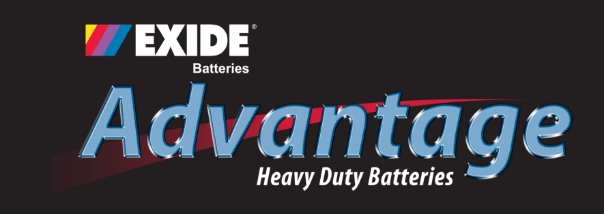FIND A BATTERY
Reminder: if your vehicle is a start stop, use only the appropriate start stop battery. if your vehicle is not a start stop, please use appropriate size.
Exide Batteries has made every effort to present accurate data which has been obtained from various automobile manufacturers and unpublished information sources. While we believe these sources to be reliable and have taken every precaution in their compilation, we cannot assume responsibility for any inaccuracies in print or specifications. Marshall Power Pty. Ltd. reserves the right to change specifications without notice.

CAUSES OF BATTERY FAILURE
All batteries have a limited life, but some conditions can shorten that life.
A low electrolyte level exposes active material, and any sulphate hardens and resists chemical action. Loss of electrolyte may be caused by a cracked case, poor maintenance (not adding water when needed), or severe overcharging which causes high internal heat and excessive gassing. Too much electrolyte is just as bad. Overfilling dilutes the electrolyte and spillage may corrode battery terminals.
Spilled electrolyte and condensation from gassing may cause corrosion on terminals, connectors, and metal hold-downs/carriers. Such corrosion increases electrical resistance, which reduces available voltage and charging effectiveness. It may also create a current leakage path to allow self-discharge.
Repeated cycling from fully charged to fully discharged and back – may cause loss of active material from the positive plates. This reduces battery capacity and its useful life.
Overcharging by the vehicle’s charging system or separate battery charger causes excessive gassing and high internal heat. Too much gassing can wash active materials off the plates, as well as cause excessive water usage. Too much heat can oxidise the positive plate material and warp the plates.
A faulty charging system will not maintain the battery at full charge. Severe undercharging allows sulphate on the plates to become hard and impossible to remove by normal charging. A weak electrolyte freezes easier. The undercharged battery may fail to crank the engine.
A battery must be mounted securely. Vibration can loosen connections, crack the case, and damage internal components.
VISUAL INSPECTION
Battery service should begin with a thorough visual inspection. This may reveal simple, easily corrected problems, or ones that may require battery replacement.
- Check for cracks in the battery case and for broken terminals. Either may allow electrolyte leakage. The battery must be replaced.
- Check for cracked or broken cables or connections. Replace, as needed.
- Check for corrosion on terminals and dirt or acid on the case top. Clean the terminals and case top with a mixture of water and baking soda. A wire brush is needed for heavy corrosion on the terminals.
- Check for a loose battery hold-down and loose cable connections. Tighten, as needed.
- Check the level of electrolyte. The level can be viewed through the translucent plastic case or by removing the vent caps and looking directly into each cell. The proper level is just below the vent funnel. If necessary, add distilled water to each low cell. Avoid overfilling. When water is added, always charge the battery to make sure the water and acid mix.
- Check for cloudy or discoloured electrolyte caused by overcharging or vibration. This could cause high self discharge. The problem should be corrected and the battery replaced.
- Check the condition of plates and separators. Plates should alternate dark (+) and light (-). If all are light, severe undercharging is indicated. Cracked separators may allow shorts. The battery should be replaced. An undercharging problem should be corrected.
- Check the tension and condition of the alternator drive belt. A loose belt must be tightened. It will prevent proper charging. A belt too tight will reduce alternator life. It should be loosened to factory specifications. A frayed or glazed belt will fail during operation. Replace it.
- Check for battery drain or parasitic loads using an ammeter. Connect the ammeter in series between the battery negative and ground cable connector. Vehicles typically show less than .020 amp of current to maintain electronic memories. A reading of more than .035 amp is unacceptable. If the ammeter reads more than .035 amp, locate and correct the cause of excessive battery drain.
- Check for battery discharge across the top to the battery using a voltmeter. Select the low voltage scale on the meter, connect the negative (black) test lead to the battery’s negative post, and connect the positive (red) test lead to the top of the battery case. If the meter reading is more than 0.5 volts, clean the case top using a solution of baking soda and water.
VOLTAGE INSPECTION
Regularly checking your battery voltage can give you basic information if your battery is healthy. Refer to the table below for a generic guide of the recommended actions based on voltage reading:
| Open Circuit Voltage | Recommended Action |
| >12.6 V | ok |
| 12.5 V -12.6 V | ok, check for voltage drop |
| <12.5 V | for recharge |
| <12.0 V | discharged battery, for immediate recharge |
BATTERY SERVICE
Battery service procedures include charging, cleaning, jump starting, and replacement. Follow the recommended procedures
CHARGING
A battery in good condition may occasionally fail to crank the engine fast enough to make it start. In such cases, the battery may require charging. All battery chargers operate on the same principle: an electric current is applied to the battery to reverse the chemical action in the cells. Never connect or disconnect leads with the battery charger turned ON. Follow the battery charger manufacturer’s instructions. Do not attempt to charge a battery with frozen electrolyte. When using a battery charger, always disconnect the battery ground cable first. This will minimise the possibility of damage to the alternator or to electronic components. Otherwise, use a charger with polarity protection that prevents reverse charging. The battery can be considered fully charged when all cells are gassing freely and when there is no change in specific gravity readings for more than one hour.
CLEANING
Cleaning the battery will aid your visual inspection and reduce the possibility of current leakage. The battery case can be cleaned with a brush and diluted soda solution. Avoid getting the solution in the cells. The battery terminals and cable connections can be cleaned with the cleaning tool (brush) made for that purpose. Remove all corrosion and oxidation, both common causes of high resistance.
JUMP STARTING
When jump starting a flat battery with a booster battery, proper connections prevent sparks. First, connect the two positive terminals. Then, connect one end of the jumper cable to the negative terminal of the booster battery, and connect the other end to a good ground away from the flat battery. If a spark occurs, it won’t be near the battery. Disconnect cable in reverse order (negative first).
BATTERY REPLACEMENT
If a battery requires replacement: use a cable puller to remove terminal clamps (negative first), unfasten the battery hold-down; lift the battery from its carrier with the proper tool; wash and paint corroded parts; replace any damaged parts of the hold-down, support tray, or cables; and select and install a battery of the proper size and capacity rating. Make sure you replace the negative cable first.
Deep Cycle Battery Care
In order to ensure that your deep cycle battery performs at its best, has a long life and stays under warranty, maintenance is important. Caring for a deep cycle battery unit differs in some ways from maintaining a standard auto battery. Here are a few tips to keep your unit in good working order.
Make sure your deep cycle battery is clean and free of corrosion. If possible, check to make sure the internal plates are submerged in water. Use distilled water to refill if needed.
Ensure that your battery is properly hooked up by inspecting whether the cables and connections are all securely fastened. When the vehicle is in operation the unit should be stable to avoid potential damage.
When attaching connectors to a threaded post, be sure to use only stainless steel Nylock Nuts. The eyelet/connector should contact well (be flat against) the lead base, with no washers separating the two surfaces. Do not over-tighten the eyelet/connector.
Do not discharge units below 11.5 volts. This type of excessive discharge will reduce the lifespan of your deep cycle battery but more importantly may void the warranty of any auto battery.
Performance and charging can be affected by extreme temperatures. Heat can cause overcharging, and will increase the amount of water used. Cold temperatures reduce capacity – as with a truck or auto battery – and slow the charging process.
Units will need to be equalised regularly – once a week if used actively. This involves a lengthy and slow charge after a normal charge cycle. Equalising helps balance all of the cells.
Self-discharge during storage is common to deep cycle, marine, truck and auto battery. Before storage, we recommend:
- Perform a complete charge
- Remove all electrical connections, including series/parallel connectors
- Make sure that your storage area is dry and cool
Every two months, perform a boost charge








